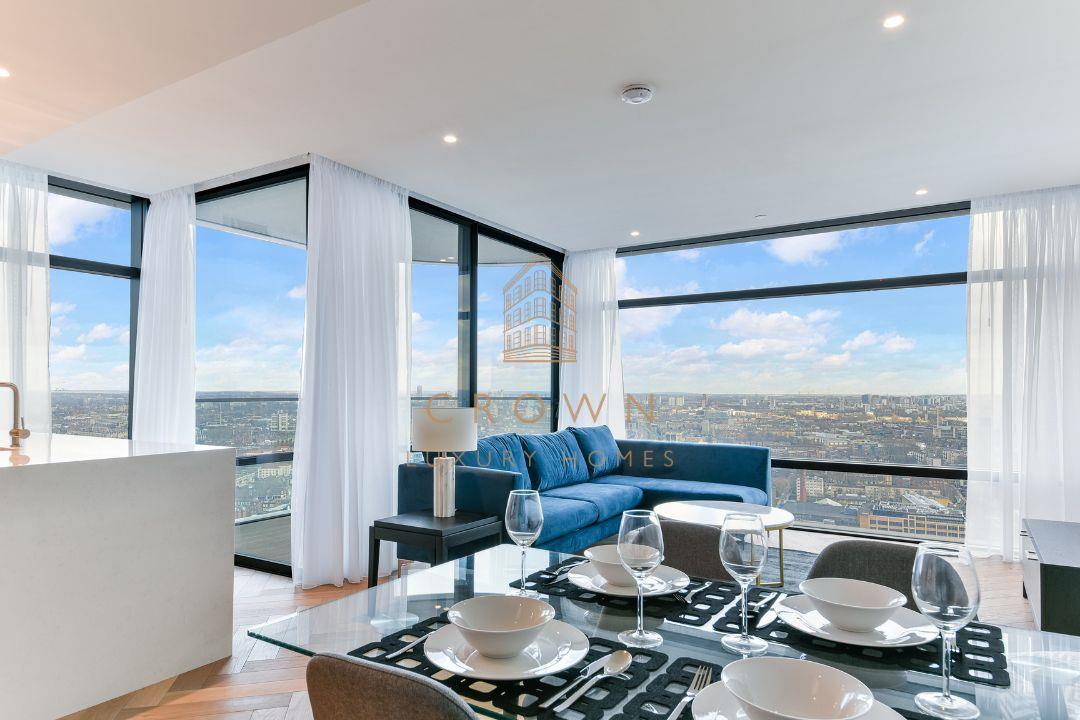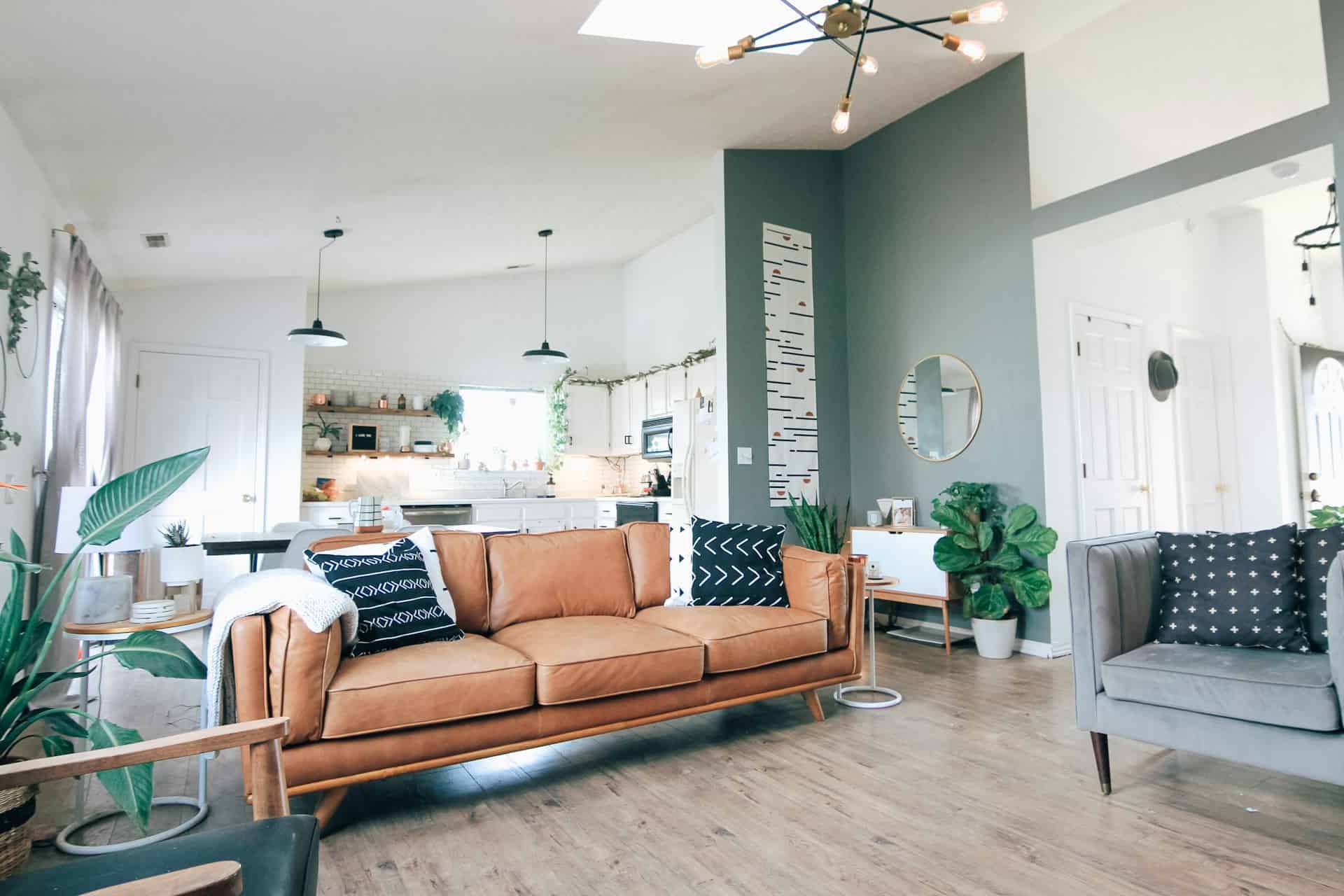What is a New-Build Apartment?
When you invest in a new-build apartment, you will most likely be buying a property that has just been built or is part of a modern development. These properties are attractive investments because of their modern fittings, up-to-date amenities, and excellent energy efficiency—all features that make them highly attractive to tenants wanting to reduce their running costs. You also benefit from the peace of mind of a developer’s warranty, which can cover structural defects for up to ten years, lowering initial maintenance costs.
However, the downside is that new builds typically sell for more than older properties in the same area. The risk of “new-build depreciation” is a factor where the value can dip slightly after the first sale, similar to buying a new car.
Crown Luxury Homes can help you weigh these factors, guiding you to a new-build investment that offers substantial long-term value and capital appreciation.
What is an Old Flat?
While new builds offer a fresh start, older flats present a different kind of opportunity. Often found in prime, established London neighbourhoods, these flats—many of them Georgian or Victorian conversions—boast unique character, larger room sizes, and a proven history of steady rental demand. This strong foundation gives investors a sense of security that a new, unproven development cannot match.
Moreover, older flats are a fantastic option for property investors looking to add value. Modern upgrades such as a new kitchen or bathroom, or more significant renovations to improve energy efficiency, can significantly boost rental yield and capital appreciation.
However, you must be prepared for the unpredictability of repairs and maintenance costs. Unlike new builds, many older properties come with challenges such as outdated plumbing, electrical wiring, or damp, which need remedying and can be expensive and time-consuming to resolve if not correctly managed.
Pros of Investing in a New-Build Apartment
The advantages of investing in a new-build apartment are considerable. Firstly, since everything is brand new, you won’t be paying for new boilers or wiring or needing to fix or replace a leaky roof. The developer’s warranty, typically a 10-year structural warranty, enhances this peace of mind, which provides security against building defects.
New builds are also a strong draw for tenants due to their energy efficiency, often achieving A or B EPC ratings. For the tenant, this means lower utility bills, which is appealing in today’s energy cost-conscious market.
Many new-build developments offer attractive communal facilities like gyms and concierge services, which appeal to the lucrative young professional and student rental markets.
Cons of Investing in a New-Build Apartment
Despite their appeal, new builds come with their own set of drawbacks. The most obvious is the higher purchase price, which often includes a premium for the modern design and brand-new condition. This can make them more expensive per square foot than older, equally well-located properties. You may also face stricter lending criteria from some lenders, who are cautious about the initial price dip or “new-build depreciation” that can occur after the first sale. This is a crucial consideration if you have a shorter investment plan.
The appeal of modern amenities may be strong, but it often translates to higher service charges and ground rent for facilities like a concierge or communal gym, which can eat into rental yields. While some developers may offer incentives like stamp duty contributions, it is vital to assess whether the long-term costs outweigh these initial savings.

Pros of Investing in an Old Flat
Older flats are an excellent investment for those who appreciate character and long-term value. Unlike the often uniform layouts of new builds, older properties tend to have larger living spaces, high ceilings, and unique period features that are a massive draw for tenants. Many are located in established, sought-after neighbourhoods, giving them an immediate edge in terms of stable demand and strong community feel.
This heritage also offers a significant opportunity for capital appreciation. Adding value through modern updates or substantial refurbishment can transform a tired property into a highly desirable home, commanding a higher rental yield and a strong resale price.
Crown Luxury Homes provides the expertise to help you identify the true potential of an older property, ensuring your investment is both profitable and sustainable.
Cons of Investing in an Old Flat
While older flats possess undeniable charm, they come with a different set of risks for landlords. The most significant is the potential for high and unpredictable maintenance costs. Unlike a new-build’s warranty-backed infrastructure, an old flat’s plumbing, electrical systems, and roof can present costly, unforeseen issues. These hidden problems can quickly eat into rental yields and require substantial capital investment.
Moreover, older properties are often less energy-efficient, making them less attractive to tenants concerned about rising utility bills. Landlords may be required to undertake expensive retrofits to meet modern energy performance (EPC) standards. Finally, the lease on an older flat can be a significant consideration. Shorter leases can complicate financing and reduce the property’s long-term value, an issue that requires careful due diligence.

Which is Better for Rental Yield?
A crucial factor for landlords is rental yield, which is the annual return on their investment from rent alone. While new builds often have a higher purchase price, they can attract premium rents from tenants who value modern amenities and lower running costs. This can result in a healthy gross yield. However, be mindful that high service charges and ground rent can significantly impact your net rental yield.
On the other hand, older properties are typically bought for less, which can mean a stronger yield relative to the initial purchase price. This is especially true for those in prime, well-established neighbourhoods. The potential to increase rent and value through strategic refurbishment is an excellent way to boost your returns over time. Ultimately, the “better” option depends on your investment strategy—whether you prioritise a high-end, low-maintenance rental or a value-added project that can be improved over time.
Conclusion
There is no single answer to whether a new-build apartment or an old flat is the better investment. The ideal choice depends entirely on your personal investment goals. If you prioritise convenience, modern amenities, and low initial maintenance, a new-build is a perfect “turnkey” solution. These properties attract tenants willing to pay a premium for a hassle-free lifestyle.
However, an older flat in an established neighbourhood may be a better fit if you are looking for a long-term investment with excellent growth potential and a strong sense of character. While they come with higher maintenance risks, the opportunity to add value through tasteful refurbishment, retaining the natural character and features of the property, can lead to significant capital appreciation.
Ultimately, both options can be excellent investments. At Crown Luxury Homes, we specialise in helping investors like you flourish in London’s property market. We provide tailored advice to ensure your next investment matches your short or long-term goals.



